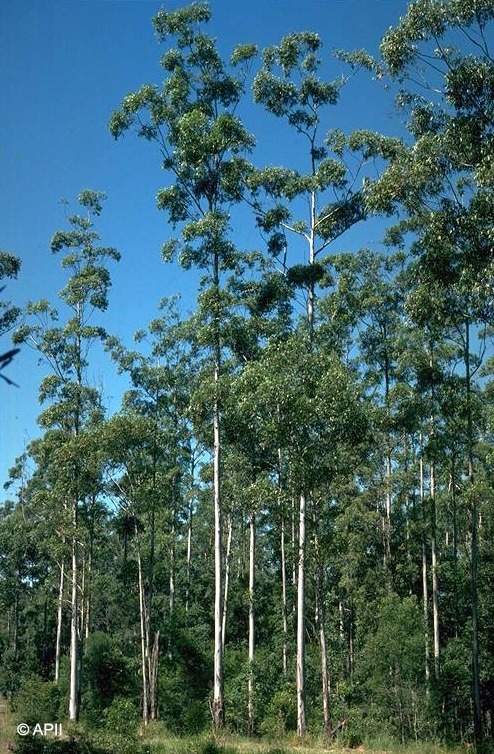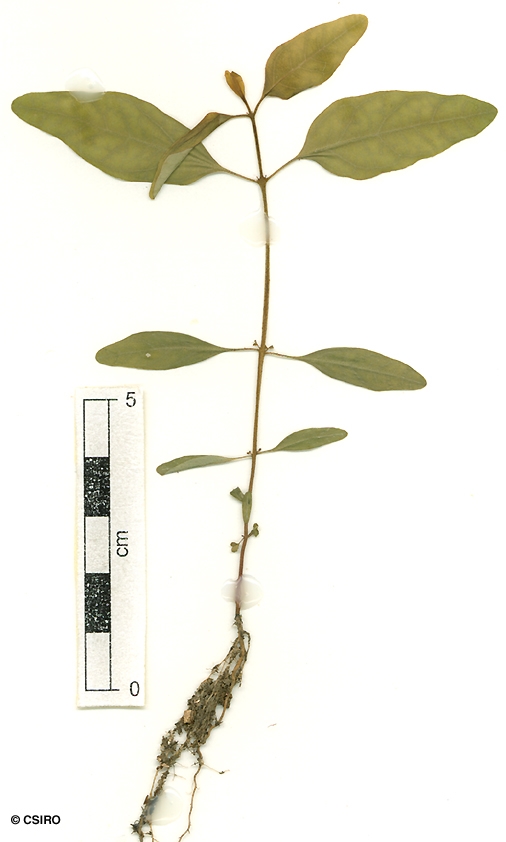Australian Tropical Rainforest Plants - Online edition
Eucalyptus grandis W.Hill




Hill, W. (1862) Catalogue of the Natural and Industrial Products of Queensland: 25. Type: Queensland, (near Brisbane), W. Hill [No 74 Queensland Woods]; holo: K.
Rose Gum; Scrub Gum; Flooded Gum
A well formed tree, bark smooth, green, white or light grey throughout on smaller trees, a rough stocking usually present on the base of the larger trees. Main crown branches tend to be +/- horizontal.
Oil dots visible with a lens if not visible to the naked eye. Leaf blades about 8-17 x 1.7-4 cm.
Peduncle flat, strap-like. Individual flowers pedicellate. Operculum +/- conical or broadly conical, about 4 mm diam., +/- equal to the calyx tube (hypanthium). Outer operculum shed early, well before the mature bud stage.
Cotyledons deeply bilobed with an indistinct vein along each lobe. Oil dots small and sparse, usually visible near the margin. At the tenth leaf stage: leaves ovate, glabrous, oil dots sparse, small, visible with a lens, more common about the margin. Seed germination time 4 to 21 days.
Endemic to Australia, occurs in NEQ, CEQ and southwards to coastal central New South Wales. Altitudinal range in NEQ from 600-1100 m. Grows as a dominant tree in wet sclerophyll forest but also occurs as an emergent in rain forest where the margins are advancing into eucalypt forest.
Not commonly used in horticulture because of its very large size and because of the danger of falling limbs.
It is a major species of forest plantations both in Australia and overseas.
This species produces a useful timber for house framing and construction, and tool handles. Swain (1928).
Wood specific gravity 0.80. Cause et al. (1989).





